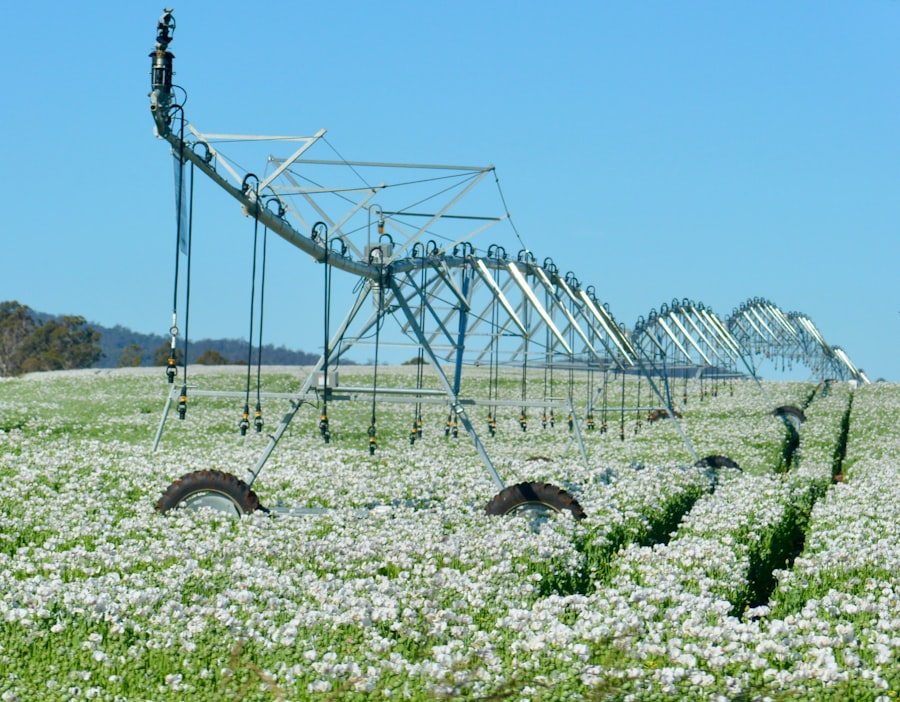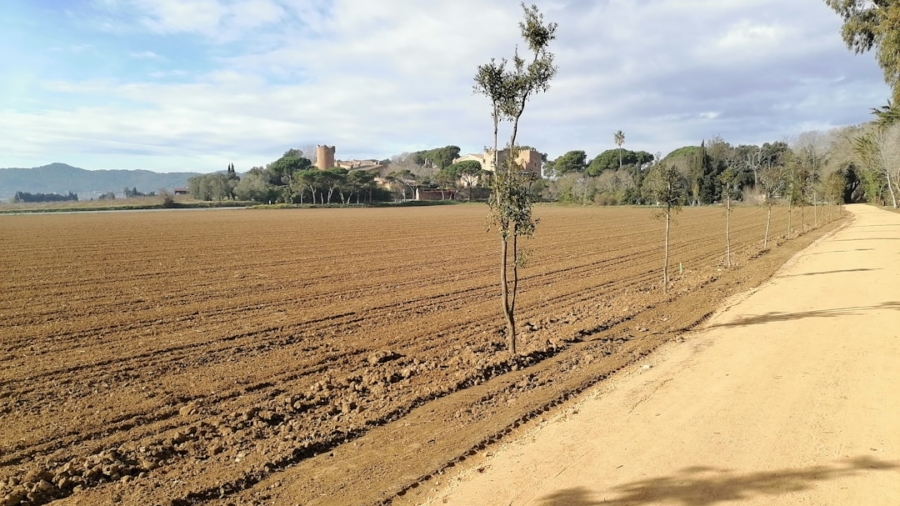The integration of artificial intelligence (AI) into agriculture marks a transformative shift in how farming practices are conducted. As the global population continues to rise, the demand for food production intensifies, necessitating innovative solutions to enhance agricultural efficiency and sustainability. AI technologies, including machine learning, data analytics, and robotics, are being harnessed to address various challenges faced by farmers, from crop management to resource allocation.
This technological revolution is not merely about increasing yields; it also encompasses optimizing resource use, improving environmental stewardship, and ensuring food security in an era of climate change. AI’s application in agriculture is multifaceted, encompassing everything from predictive analytics for crop yields to automated systems for irrigation and pest control. By leveraging vast amounts of data collected from various sources—such as satellite imagery, sensors in the field, and historical weather patterns—AI can provide actionable insights that empower farmers to make informed decisions.
This data-driven approach not only enhances productivity but also promotes sustainable practices that are crucial for the long-term viability of agricultural systems.
Key Takeaways
- AI has the potential to revolutionize agriculture by optimizing water usage, analyzing soil moisture levels, and contributing to precision irrigation systems.
- Water usage optimization is crucial in agriculture to ensure sustainable and efficient crop production, and AI can play a significant role in achieving this goal.
- AI can analyze soil moisture levels to provide farmers with valuable insights into the water needs of their crops, leading to more informed irrigation decisions.
- Precision irrigation systems, powered by AI, can deliver the right amount of water to the right areas of the field at the right time, maximizing crop yield while minimizing water waste.
- AI can be used for crop monitoring and yield prediction, allowing farmers to make data-driven decisions and optimize their farming practices for better productivity.
The Importance of Water Usage Optimization in Agriculture
Water is one of the most critical resources in agriculture, yet it is often mismanaged, leading to wastage and environmental degradation. The agricultural sector accounts for approximately 70% of global freshwater withdrawals, making water usage optimization essential for sustainable farming practices. Inefficient irrigation methods can lead to overuse of water resources, soil salinization, and reduced crop yields.
Effective water management not only conserves this vital resource but also enhances crop resilience against drought and other climate-related challenges. By implementing strategies that focus on precise water application, farmers can improve their overall productivity while minimizing environmental impact.
This is where AI plays a pivotal role; through advanced analytics and real-time monitoring, AI technologies can help farmers determine the optimal amount of water needed for their crops at any given time, thus ensuring that every drop counts.
The Role of AI in Analyzing Soil Moisture Levels

Soil moisture is a critical factor influencing plant growth and agricultural productivity. Traditional methods of measuring soil moisture often involve labor-intensive processes that can be both time-consuming and inaccurate. However, AI technologies have revolutionized this aspect of agriculture by enabling real-time monitoring and analysis of soil moisture levels through the use of sensors and machine learning algorithms.
These sensors can be strategically placed throughout a field to collect data on moisture content, which is then analyzed by AI systems to provide insights into the specific needs of crops. For instance, companies like CropX have developed soil sensors that measure moisture levels at various depths and relay this information to farmers via a mobile app. By analyzing this data, AI can predict when irrigation is necessary and how much water should be applied, thereby preventing both under- and over-irrigation.
This not only conserves water but also promotes healthier crop growth by ensuring that plants receive the right amount of moisture at the right time.
AI’s Contribution to Precision Irrigation Systems
Precision irrigation systems represent a significant advancement in agricultural practices, allowing for targeted water application based on real-time data analysis. AI plays a crucial role in enhancing these systems by integrating various data sources—such as weather forecasts, soil moisture readings, and crop health indicators—to optimize irrigation schedules. By utilizing machine learning algorithms, these systems can learn from historical data and adapt to changing conditions, ensuring that crops receive the precise amount of water they need for optimal growth.
For example, companies like John Deere have developed smart irrigation solutions that utilize AI to automate the irrigation process. These systems can adjust water delivery based on factors such as evapotranspiration rates and soil moisture levels, significantly reducing water waste. Additionally, by employing satellite imagery and drones equipped with AI capabilities, farmers can monitor their fields more effectively, identifying areas that require more or less water.
This level of precision not only conserves water but also enhances crop yields and reduces operational costs.
Using AI for Crop Monitoring and Yield Prediction
Crop monitoring is an essential aspect of modern agriculture, as it allows farmers to assess plant health and make informed decisions regarding management practices. AI technologies have significantly improved the ability to monitor crops through the use of remote sensing, computer vision, and predictive analytics. By analyzing images captured by drones or satellites, AI algorithms can detect early signs of disease, pest infestations, or nutrient deficiencies, enabling farmers to take timely action.
Moreover, AI’s predictive capabilities extend to yield forecasting. By analyzing historical yield data alongside current environmental conditions and agronomic practices, AI can provide accurate predictions about future crop yields. This information is invaluable for farmers as it aids in planning harvests, managing supply chains, and making financial decisions.
For instance, IBM’s Watson Decision Platform for Agriculture combines weather data with IoT sensor information to help farmers predict crop yields more accurately, allowing them to optimize their operations accordingly.
AI’s Impact on Sustainable Agriculture Practices

Optimizing Resource Use
Through precise monitoring and data-driven decision-making, AI helps farmers adopt practices that minimize chemical inputs, reduce waste, and conserve natural resources.
Precision Pest Management
For example, AI-driven pest management systems can analyze data from various sources to identify pest populations and recommend targeted interventions rather than blanket pesticide applications. This not only reduces chemical usage but also promotes biodiversity by protecting beneficial insects.
Intelligent Crop Rotation
Additionally, AI can assist in crop rotation planning by analyzing soil health data and recommending optimal planting schedules that enhance soil fertility and reduce erosion.
Challenges and Limitations of AI in Water Usage Optimization
Despite the numerous benefits that AI brings to agriculture, several challenges and limitations must be addressed for its full potential to be realized. One significant barrier is the accessibility of technology; many smallholder farmers lack the resources or infrastructure needed to implement advanced AI systems effectively. This digital divide can exacerbate existing inequalities in agricultural productivity and access to information.
Furthermore, the reliance on data raises concerns about privacy and security. Farmers may be hesitant to share their data with third-party companies due to fears of misuse or loss of control over their information. Additionally, the accuracy of AI predictions depends heavily on the quality of the data being fed into the system; poor-quality or incomplete data can lead to erroneous conclusions that may adversely affect farming decisions.
Future Prospects and Implications of AI in Agriculture
Looking ahead, the future prospects for AI in agriculture are promising yet complex. As technology continues to evolve, we can expect even more sophisticated applications that enhance efficiency and sustainability in farming practices. The integration of AI with other emerging technologies—such as blockchain for supply chain transparency or biotechnology for crop improvement—could lead to revolutionary changes in how food is produced and distributed.
Moreover, as climate change continues to pose challenges for agriculture worldwide, AI will play a crucial role in developing adaptive strategies that help farmers cope with shifting environmental conditions. By providing real-time insights into weather patterns and soil health, AI can empower farmers to make proactive decisions that mitigate risks associated with climate variability. In conclusion, while there are challenges to overcome, the implications of AI in agriculture are profound.
The potential for improved water usage optimization through advanced technologies not only promises enhanced productivity but also aligns with global efforts toward sustainable development in food production systems. As we move forward into an increasingly digital agricultural landscape, embracing these innovations will be essential for ensuring food security and environmental sustainability for generations to come.

